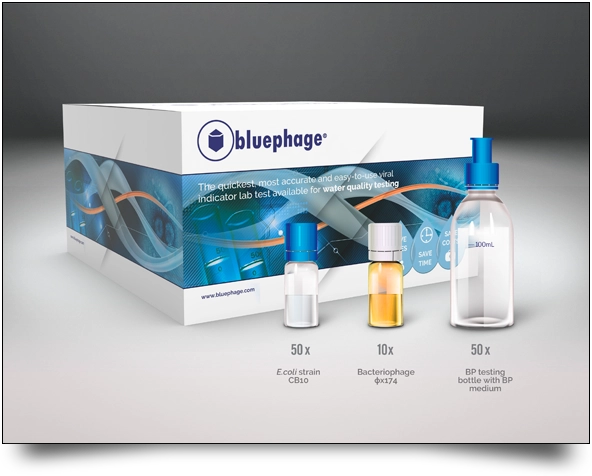BLOG | Bluephage
Applying coliphage analysis after water disinfection treatment in Drinking Water Treatment Plant (DWTP).

Disinfection of water for drinking, agricultural and recreational purposes consists of eliminating pathogenic microorganisms contained in the water, such as bacteria and viruses, which have not been eliminated in the initial stages of water treatment.
If water is not disinfected correctly, it can harm human health, causing severe waterborne diseases such as diarrhea. In the case of water extracted from springs or natural wells, disinfection is the only treatment given to water to obtain safe drinking water (pathogen-free water).
It is vitally important to improve and invest in water treatment to make water drinkable and thus reusable because drinking water is a scarce commodity. It is estimated that only 0.4% of the world’s water is fit for human consumption, and it is, therefore, essential to invest in water purification to ensure that everyone has access to safe drinking water.
Water is made drinkable at the DWTP, and the water purification process varies depending on the natural conditions of the territory. For example, suppose the water source is surface water (river or lake). In that case, drinking water treatment usually consists of separating specific components from the natural water, followed by precipitation of impurities, filtration, and disinfection with chlorine or ozone.
Chlorine is added to remove any bacteria or viruses, and if pathogens are to be removed from groundwater or natural springs, this can also be achieved by ultraviolet irradiation or the application of ozone, for example.
Once the process has been completed in the DWTP, it is essential to carry out various water analyses to ensure that the purification process has been successful. Drinking water must be colorless, odorless, and tasteless and comply with the regulations in force in each country.
Even in countries with extensive sanitation systems, outbreaks of waterborne infectious diseases occur. Furthermore, current trends, such as the increasing concentration of population in large urban agglomerations, climate change, aging of existing infrastructures, and emerging pathogens, indicate that water resource management will become increasingly difficult in the near future. In this context, it is urgent to control the fate of fecal microorganisms in wastewater to avoid the negative health consequences of discharging treated effluents into surface waters (rivers, lakes, etc.) or marine coastal waters.
Measurement of bacterial indicators does not provide sufficient information to gauge the risk to human health associated with viral infections. Therefore, it is advisable to include a viral indicator – e.g., somatic coliphages – to monitor wastewater treatment performance. As demonstrated in a study published by Juan Jofre, Francisco Lucena and Anicet R. Blanch in 2021, somatic coliphage concentrations, as viral indicators, in raw wastewater remain consistently high throughout the year worldwide, as do bacterial indicators.
From these data, coliphages can be recommended as indicators for evaluating the effectiveness of wastewater management procedures to minimize the sanitary impact of urban wastewater discharge on surface waters.


